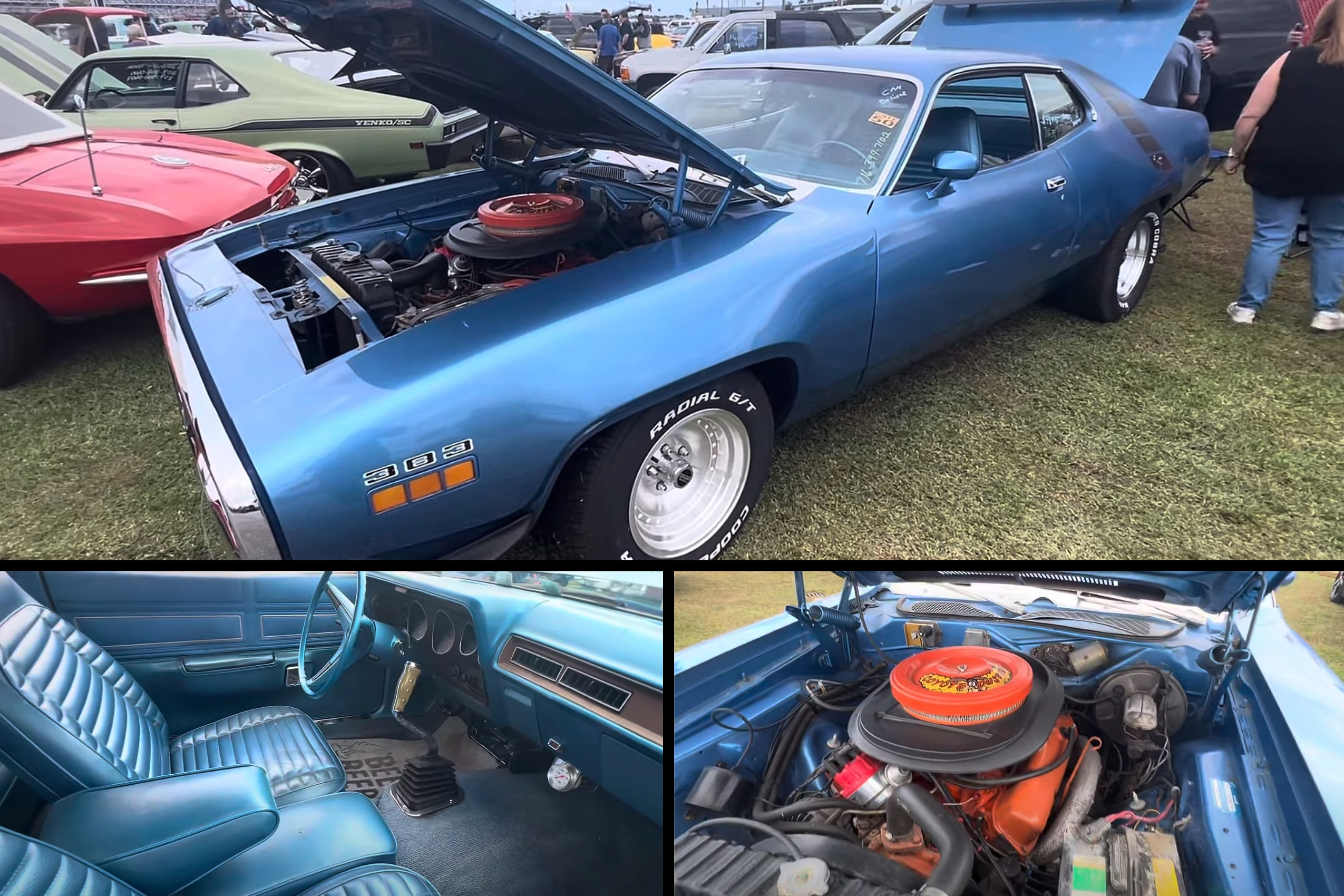Launched in 1968 as the company’s entry-level muscle car, the Plymouth Road Runner was an instant hit. The nameplate moved 44,303 units in its first year in showrooms and a whopping 81,105 examples in 1969. But that didn’t last long. As insurance rates got higher, Road Runner deliveries began to drop.
Plymouth sold 36,861 units in 1970 and just 13,664 vehicles in 1971. The nameplate soldiered on through 1974, but the 1971 version remains the rarest from the golden muscle car era. It’s also the last Road Runner equipped with the six-barrel 440-cubic-inch (7.2-liter) RB and the 426-cubic-inch (7.0-liter) HEMI.
The latter is impressively rare at only 55 units built. That’s only 0.4% of the total production run, including all transmission options. The 440 Six-Barrel variant is also decidedly rare, with just 246 examples produced.
Oh, I should also mention that 1971 was the first year for the 340-cubic-inch (5.6-liter) V8 in the Road Runner. The engine was ordered by only 1,681 customers, so this version isn’t exactly common either.
Finally, the hardtop also got the 383-cubic-inch (6.3-liter) big-block in the traditional four-barrel configuration. As was the case since 1968, the 383-equipped Road Runner was pretty common. In 1971, no fewer than 11,682 cars left the assembly line with this mill. That’s far from rare, but only as long as you don’t look at the options list.

The B5 Blue example you see here is one of those 383-powered rigs. Spotted at a local car show, this Road Runner is a bit special because it’s a highly original survivor. The Mopar also emerged from San Diego, California, so it’s as rust-free as southern cars get.
Granted, the paint looks too good to be factory-original for a vehicle that’s 52 years old as of 2023, so I think the Road Runner got a refresh at some point. But nearly everything else appears to be original, which is a rare sight nowadays. And yes, the 383-cubic-inch Coyote Duster is a numbers-matching lump.
And while it may seem common at first glance, this Mopar is actually pretty hard to find in this setup. That’s mainly because it has a four-speed manual. Records show that only 3,373 were ordered with the 383/4-speed combo.
There’s also the blue-on-blue color combo. Yes, B5 Blue officially called True Blue Poly) was rather popular in 1971, but many of these cars arrived in showrooms with black or white interiors. Not to mention that some also got vinyl tops. This all-blue example, which we could call triple-blue since it doesn’t have a vinyl roof, is probably one of fewer than 50 made just like this.
And while I’d take a Moulin Rouge or Curious Yellow example over this one any day of the week, I must admit that blue-over-blue is an attention-grabbing combo.
